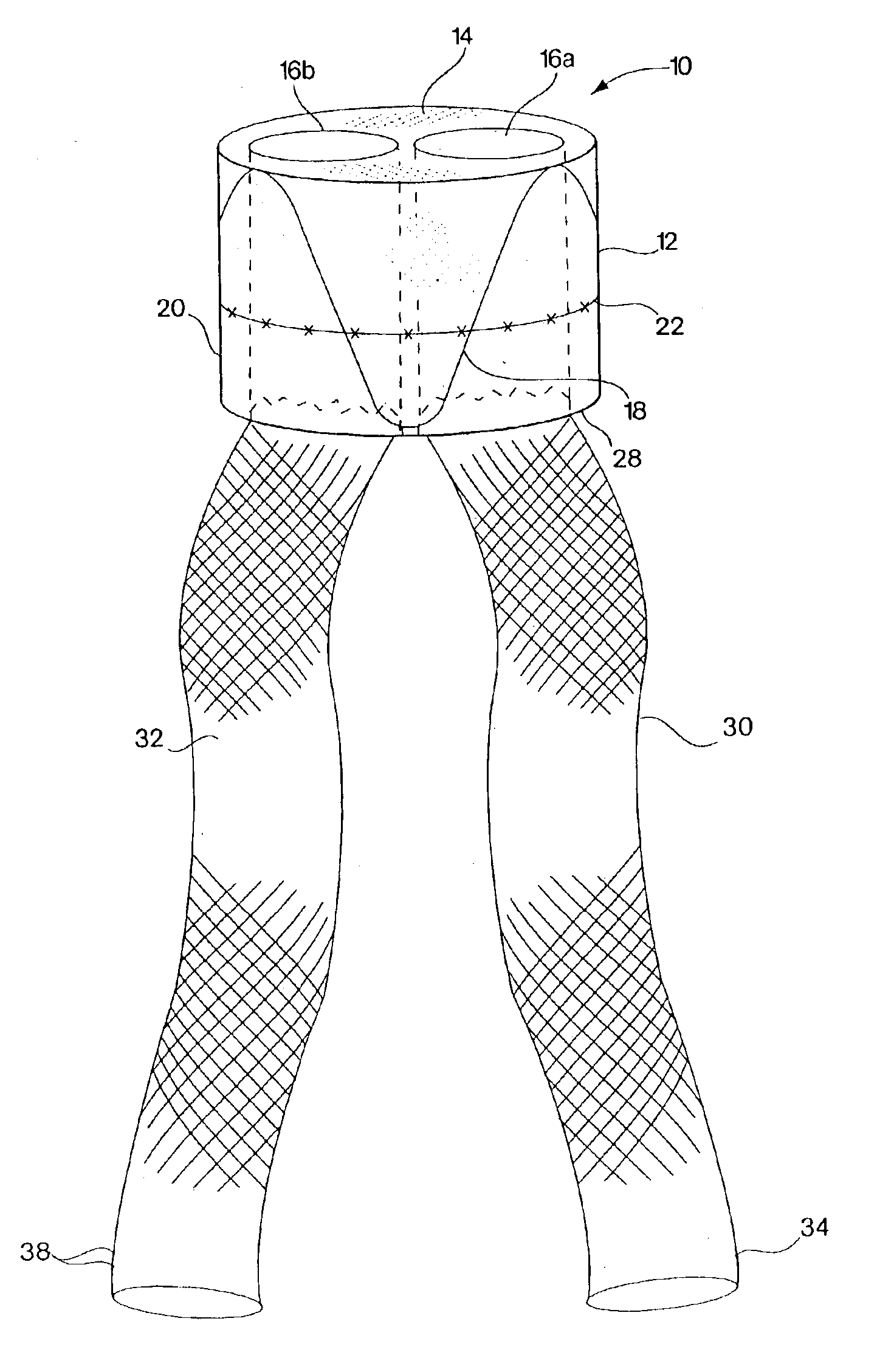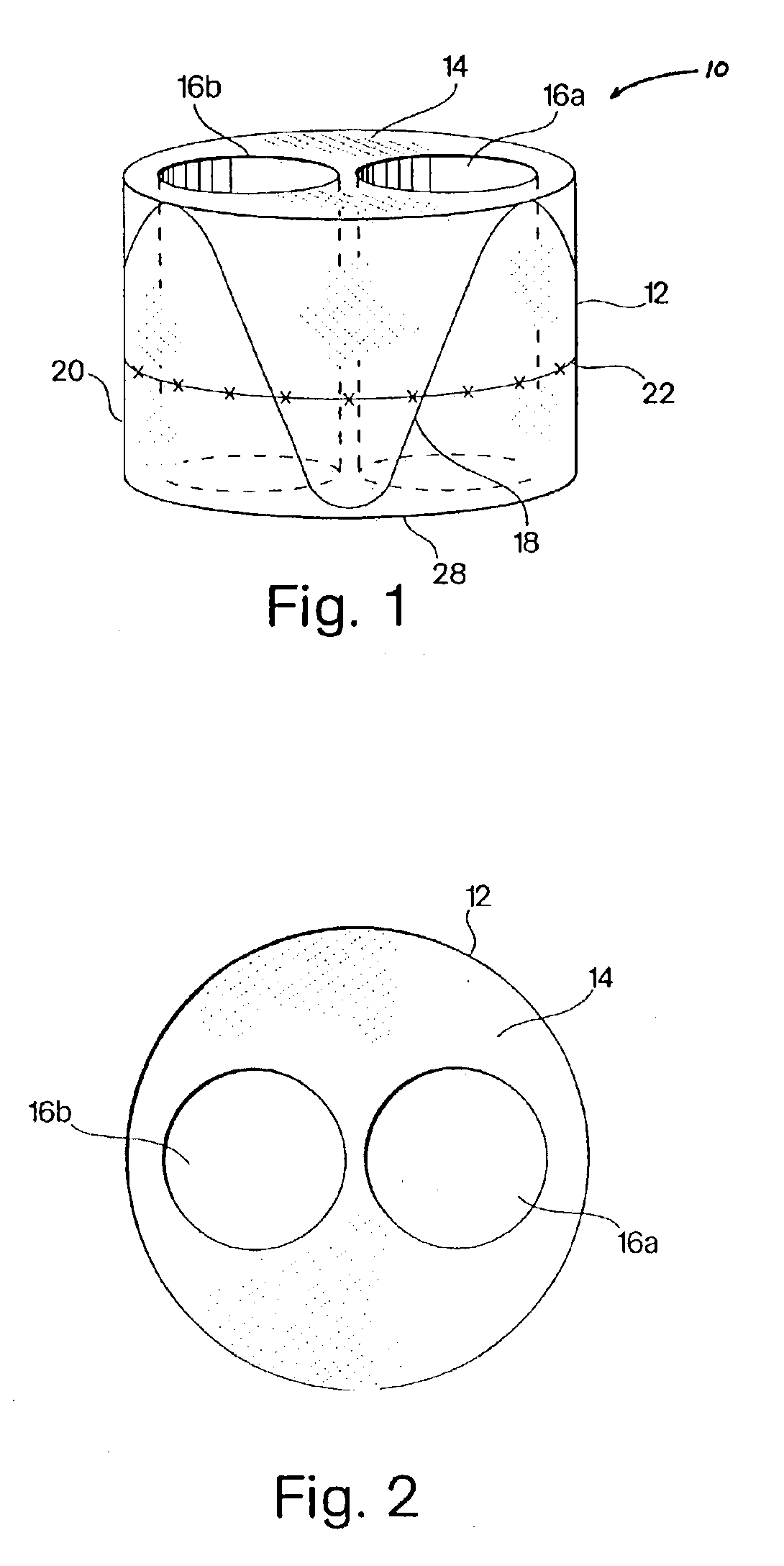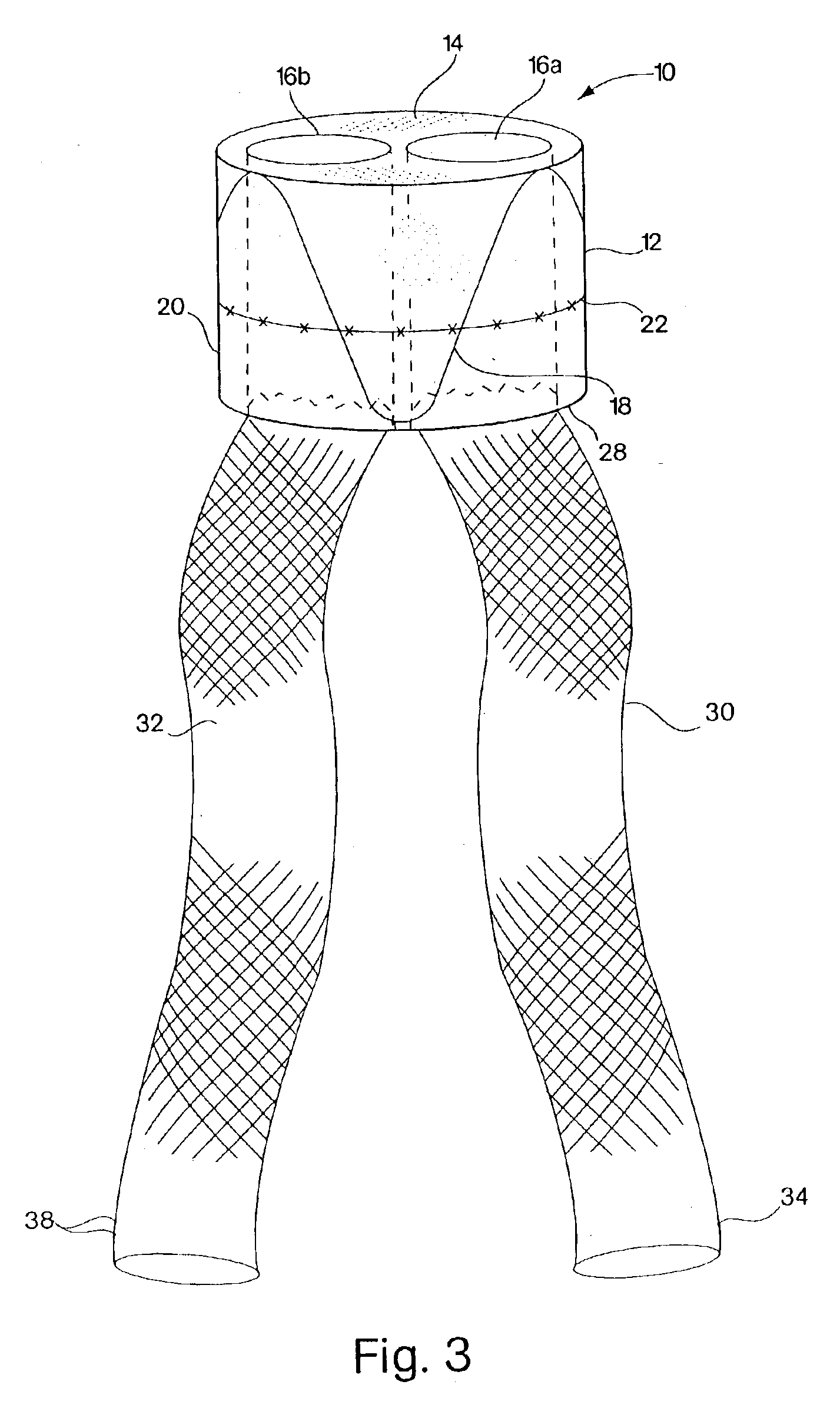Short body endoprosthesis
a short-body, endoprosthesis technology, applied in the field of vascular disorders, can solve the problems of substantial surgical intervention, substantial risk of rupture and death, and surgery itself can be taxing and dangerous for patients, so as to reduce the risk of rupture, reduce the pressure on the weakened tissue wall, and enhance the security of the trunk engagement
- Summary
- Abstract
- Description
- Claims
- Application Information
AI Technical Summary
Benefits of technology
Problems solved by technology
Method used
Image
Examples
Embodiment Construction
To provide an overall understanding of the invention, the methods, systems and devices of the invention will be discussed with reference to the application of treating an aortic aneurysm. However, it will be understood by persons of ordinary skill in the art that the general methods, systems and devices described herein are equally applicable to all cases in which implants are provided for carrying fluids within the body. These applications can include vascular grafts for treating other aneurysms, lesions, grafts for carrying urine, grafts for carrying bile, grafts for creating subcutaneous injection ports for receiving fluids such as therapeutic agents and saline solution, or any other application requiring an implant to be located in a lumen of a patient. Other clinical uses of the invention can be made without departing from the scope of the invention.
The invention comprises, inter-alia, endoprosthetic implants, a subset of which can include a class of endovascular grafts for tre...
PUM
 Login to View More
Login to View More Abstract
Description
Claims
Application Information
 Login to View More
Login to View More - R&D
- Intellectual Property
- Life Sciences
- Materials
- Tech Scout
- Unparalleled Data Quality
- Higher Quality Content
- 60% Fewer Hallucinations
Browse by: Latest US Patents, China's latest patents, Technical Efficacy Thesaurus, Application Domain, Technology Topic, Popular Technical Reports.
© 2025 PatSnap. All rights reserved.Legal|Privacy policy|Modern Slavery Act Transparency Statement|Sitemap|About US| Contact US: help@patsnap.com



